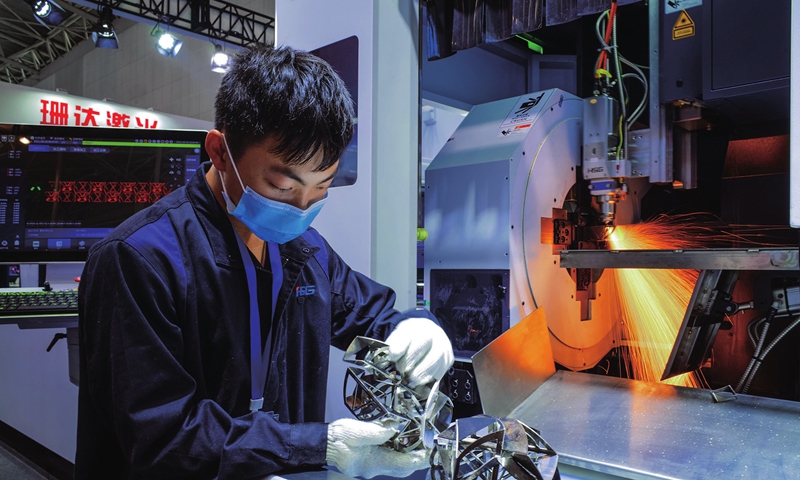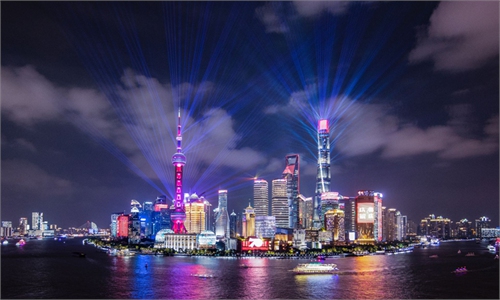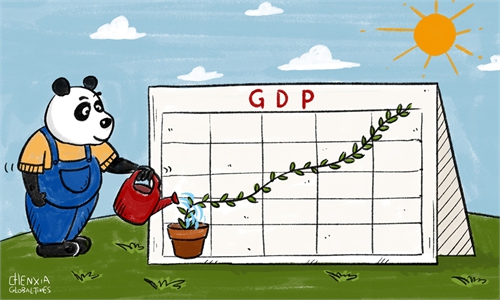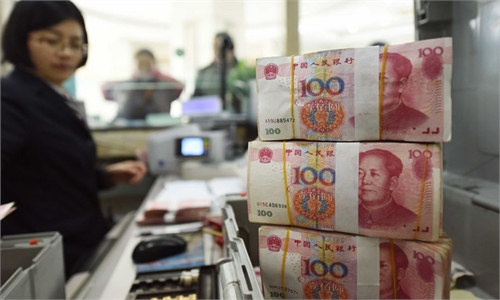High-tech moves into high gear, energizing China’s economic rebalancing
Investment soars in H1, energizing China’s economic rebalancing

A man checks items created by a laser cutter at the opening of an international equipment manufacturing exhibition in North China's Tianjin on Thursday. The expo, where high-end computer numerically controlled machines, smart control systems, industrial robots and laser welding assembly lines are showcased, has attracted nearly 1,000 exhibitors and over 4,000 products. Photo: cnsphoto
High-tech manufacturing has become a cornerstone of China's economic growth in the first half year, official data showed on Thursday, instilling optimism in the much-coveted transition toward an innovation-driven economy.
Investment in high-tech manufacturing soared 29.7 percent year-over-year in the first six months, and the growth rate averaged 17.1 percent on a two-year basis, the National Bureau of Statistics (NBS) said on Thursday, as it announced a raft of economic data.
Investment in the manufacturing sector at large rose by 19.2 percent year-on-year in the first half, or a gain of 2 percent on average over the past two years.
By comparison, urban fixed-asset investment, one of the three key components powering economic growth, grew 12.6 percent in the first half, slightly short of the economy's expansion for the same period.
The Chinese economy recorded an expansion of 7.9 percent in the second quarter from a year earlier, down from 18.3 percent over the first quarter, per NBS numbers, and first-half GDP growth hit 12.7 percent.
The high-tech manufacturing sector's stellar performance in investment terms mirrored a trend that started during the 13th Five-Year Plan (2016-20) period, which eyes remaking the country's resource-, labor- and energy-intensive manufacturing into one that's environmentally friendly and capital- and knowledge-based, Tian Yun, former vice director of the Beijing Economic Operation Association, told the Global Times on Thursday.
Many regions including Beijing, Shanghai, Guangdong Province, Central China's Henan Province, and Northwest China's Gansu and Shaanxi provinces have pushed for the building of major projects this year, with a noticeable increase in investment in high-tech manufacturing projects, the Shanghai Securities Journal reported this month.
The National Development and Reform Commission, the country's top economic planner, has envisioned drawing up the road map to building new infrastructure projects over the 14th Five-Year Plan (2021-25) within this year. The action plan will focus on the digital economy, 5G applications, industrial internet and data centers.
With the nation's industrial restructuring bearing fruit, the economy got a much-needed shot in the arm, fending off concerns over a slowdown in a larger part of the investment landscape, observers said.
Fast-paced growth - most notably in commitments to high-tech manufacturing - fueled overall investment growth, Bank of Communications economists Tang Jianwei and Liu Xuezhi said in a statement sent to the Global Times on Thursday.
Infrastructure and real estate investment actually cooled over the past month, according to the economists. They attributed a pick-up in overall investment in June to a conspicuous rise in manufacturing investment, particularly in high-tech manufacturing.
Investment in computing and office equipment manufacturing soared 47.5 percent in the first half year, while that in medical equipment and instrument production jumped 34.2 percent.
Additionally, the added value of high-tech manufacturing gained 22.6 percent in the first half year. The growth rate averaged 13.2 percent on a two-year basis, according to NBS statistics.
More specifically, the output of new-energy vehicles (NEVs) skyrocketed 205 percent in the first half year, while industrial robot production surged 69.8 percent and integrated circuit manufacturing increased 48.1 percent as measured by output.
The readings outstripped the added value of major industrial companies, which was up 15.9 percent year-over-year from January to June, or 7 percent on average in two-year terms.
The data for June alone was clearly indicative of an uptrend powered by high-tech manufacturing industries.
The added value of high-tech manufacturing posted a rise of 18 percent year-on-year last month, quickening by 0.5 percentage points from the previous month and bucking a decline of 0.3 percentage points in the gain of manufacturing added value in June, according to the economists at Bank of Communications.
The substantial spikes in the output of NEVs, industrial robots, integrated circuits and microcomputers over June demonstrate that there's been a significant upgrade in the industrial structure, the economists said.
They forecast a continued improvement in manufacturing-related investment, as the economy's shift toward being innovation-driven would power ahead.
Still, absolute growth rates might moderate in the remainder of the year, factoring in a higher base for the second half of last year and weaker-than-expected demand, which tends to weigh on investment at large, Tian said.
The push to implement the Regional Comprehensive Economic Partnership, which China has ratified, and efforts that are in progress to reset in motion the ratification of a massive investment deal between China and the EU, could give a significant boost to investment in high-tech manufacturing, he continued.
The latter, in particular, would prompt other major economies - including the US - to jump into funding high-tech manufacturing projects in the Chinese market, increasingly a promising area that no one will risk losing.



